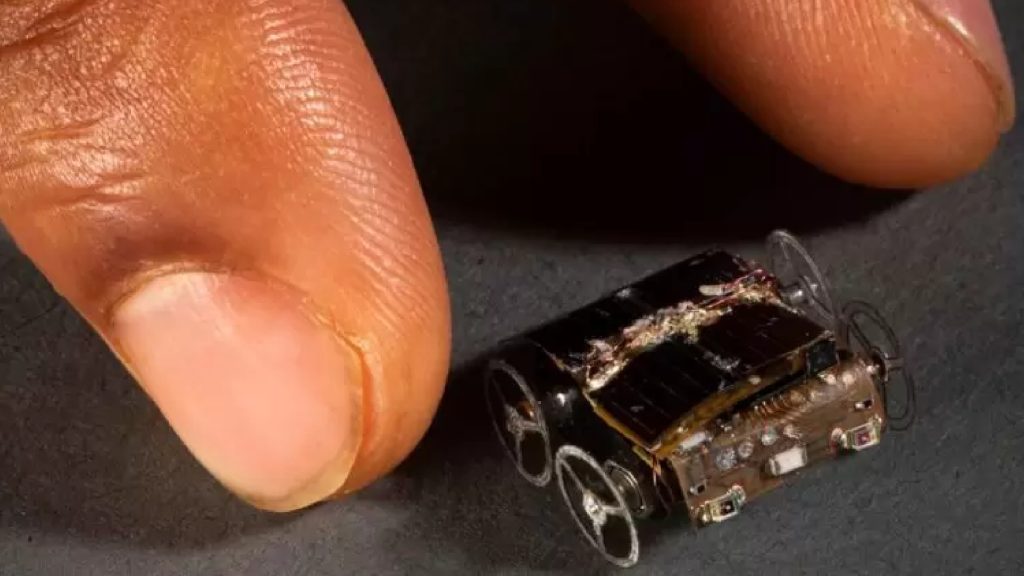
With four tiny vintage wheels this miniature robot has been developed by researchers at the University of Washington.
Measuring 10 millimeters per side and weighing less than a gram, it can navigate and operate in restrained spaces and delicate environments that are inaccessible to larger robots.
How Does It Operate?
Its ability to operate by itself on light and radio waves enables it to wirelessly and autonomously activate in various industries including healthcare, manufacturing, etc.
Although the millimobile’s size is not easily visible to the naked eye it eliminates the need for cables and external power sources thus enhancing flexibility and safety. It can control its movements and manipulations to perform complex tasks with high accuracy and dexterity.
Since it relies on renewable energy sources like light, it makes it an environmentally friendly technology. As well as its minimal power consumption due to its small size contributes to its low environmental impact.
How Did It Become a Millirobot?
The Millimobile robot is the outcome of a collaborative research effort directed by University of Washington Professor Shyam Gollakota. The team which includes professionals in robotics, electrical engineering, and materials science has been working on the project for several years. Significant obstacles, such as miniaturizing the robot’s components and establishing efficient energy collecting systems, were overcome by the researchers. Their efforts have resulted in the development of a ground-breaking robot with the potential to revolutionize a variety of fields.
Milli but Macro Capabilities
Starting with its applications in the healthcare sector the miniature robot can deliver medication immediately to the needed targeted areas within the body or it can assist with rehabilitation exercises.
On top of that, it could be implemented for its accuracy control over manufacturing tasks.
Wait, I lost count. Where was I?
Yes, now.
3. Environmental monitoring: It could be implemented for collecting data on air and water, uncover pollutants in remote areas and track wildlife populations.
4. Maintenance: It can inspect pipelines, bridges, and other infrastructure for flaws and deterioration.
5. Research and education: This tiny thing is a crucial tool for research in robotics, nanotechnology, and materials science. As well as helping students to be educated about robotics and engineering principles.
The Greatness of its Softness!
The millirobot has a soft and flexible body that helps in minimizing the risk of tissue damage, therefore allowing safe interaction with living organisms. It’s cost-effective compared to other traditional robots due to its simple design.
Will the future be dominated by such miniaturized robots? And when will it be used or misused, for political reasons?
Inside Telecom provides you with an extensive list of content covering all aspects of the tech industry. Keep an eye on our Tech sections to stay informed and up-to-date with our daily articles.